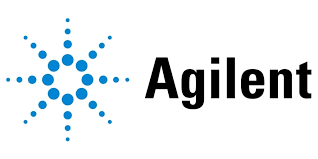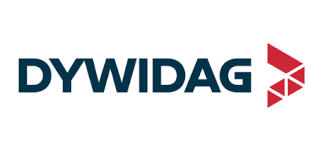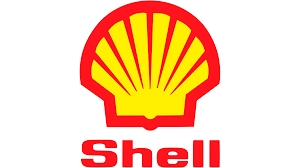Plastic To Fuel Conversion Technologies
Published Date: 29 September 2025 | Report Code: plastic-to-fuel-conversion-technologies
Plastic To Fuel Conversion Technologies Market Size, Share, Industry Trends and Forecast to 2033
This comprehensive report on Plastic To Fuel Conversion Technologies provides an in‐depth exploration of market dynamics, future growth potential, and technological innovations from 2024 to 2033. Covering industry insights, segmentation, regional analysis, and forecast trends, the report offers valuable quantitative and qualitative data to help stakeholders navigate evolving market conditions effectively.
| Metric | Value |
|---|---|
| Study Period | 2024 - 2033 |
| 2024 Market Size | $3.50 Billion |
| CAGR (2024-2033) | 7.2% |
| 2033 Market Size | $6.66 Billion |
| Top Companies | EcoFuel Innovations Inc., GreenCycle Energy Solutions |
| Last Modified Date | 29 September 2025 |
Plastic To Fuel Conversion Technologies (2024 - 2033)
Plastic To Fuel Conversion Technologies Market Overview
Customize Plastic To Fuel Conversion Technologies market research report
- ✔ Get in-depth analysis of Plastic To Fuel Conversion Technologies market size, growth, and forecasts.
- ✔ Understand Plastic To Fuel Conversion Technologies's regional dynamics and industry-specific trends.
- ✔ Identify potential applications, end-user demand, and growth segments in Plastic To Fuel Conversion Technologies
What is the Market Size & CAGR of Plastic To Fuel Conversion Technologies market in 2024?
Plastic To Fuel Conversion Technologies Industry Analysis
Plastic To Fuel Conversion Technologies Market Segmentation and Scope
Tell us your focus area and get a customized research report.
Plastic To Fuel Conversion Technologies Market Analysis Report by Region
Europe Plastic To Fuel Conversion Technologies:
The European market is characterized by progressive environmental policies and a well-established infrastructure for renewable energy solutions. With a market size of 1.01 units in 2024 growing to 1.92 units by 2033, Europe is at the forefront of integrating plastic recycling with fuel conversion. Stringent emissions regulations and incentivized renewable projects are driving this technological transition, turning regulatory challenges into opportunities for market expansion.Asia Pacific Plastic To Fuel Conversion Technologies:
The Asia Pacific region is poised for significant market expansion, driven by robust industrial growth and increased government initiatives aimed at sustainable waste management. In 2024, the market is estimated at 0.67 units, and projections indicate a rise to 1.27 units by 2033. The growth is further bolstered by high R&D investments and the adoption of state-of-the-art conversion technologies, making the region a key market in the global landscape.North America Plastic To Fuel Conversion Technologies:
North America remains a critical market with strong emphasis on environmental sustainability and technological innovation. With market figures of 1.30 units in 2024 and an anticipated increase to 2.48 units by 2033, the region benefits from extensive funding, supportive regulatory frameworks, and a mature industrial base, which collectively foster steady growth in conversion technology adoption.South America Plastic To Fuel Conversion Technologies:
In South America, the market is witnessing gradual adoption of Plastic To Fuel Conversion Technologies. Despite starting from a modest base of 0.13 units in 2024, forecasts suggest growth to 0.25 units by 2033. Regional policies promoting renewable energy and waste recycling are expected to drive market development, though economic constraints and infrastructural bottlenecks may moderate rapid expansion.Middle East & Africa Plastic To Fuel Conversion Technologies:
The Middle East and Africa region is emerging as an attractive market space with growing investments in renewable technologies. Starting at 0.39 units in 2024, the market is projected to reach 0.75 units by 2033. The region is benefiting from increasing awareness of environmental issues and strategic investments in modern infrastructure, though market growth may be tempered by economic fluctuations and policy uncertainties.Tell us your focus area and get a customized research report.
Plastic To Fuel Conversion Technologies Market Analysis By Technology
Global Plastic to Fuel Conversion Technologies Market, By Technology Market Analysis (2024 - 2033)
Within the technology segment, advancements in conversion processes remain a critical driver of market growth. Pyrolysis, with a market size of 2.31 units in 2024 expected to rise to 4.39 units in 2033, dominates due to its ability to convert plastics into high-value fuels efficiently. Gasification and catalytic conversion provide alternative methods that are gaining traction, offering lower energy consumption and improved environmental profiles. The integration of artificial intelligence to optimize these processes and the application of machine learning for predictive maintenance are set to revolutionize technology performance further. Continuous process innovations and pilot-scale demonstrations are expected to increase operational safety and conversion efficiency, securing a competitive edge in an already dynamic field.
Plastic To Fuel Conversion Technologies Market Analysis By Feedstock
Global Plastic to Fuel Conversion Technologies Market, By Feedstock Market Analysis (2024 - 2033)
The feedstock segment encompasses the diverse types of plastics that are processed in fuel conversion technologies. Key feedstock components include polyolefins, which have a market size of 1.97 units in 2024 expanding to 3.75 units in 2033, and exhibit a consistent market share of approximately 56.3%. Polystyrene, with a relatively smaller market size of 0.74 units in 2024 rising to 1.41 units by 2033, remains critical due to its unique chemical properties. Polyethylene terephthalate (PET) and other plastic fractions, though smaller in size, provide valuable inputs that balance the feedstock mix. The diversity in feedstock not only mitigates risks associated with supply chain disruptions but also bolsters overall conversion efficiency and product quality.
Plastic To Fuel Conversion Technologies Market Analysis By End Product
Global Plastic to Fuel Conversion Technologies Market, By End Product Market Analysis (2024 - 2033)
End product segmentation in this market highlights the performance of various fuel outputs. The conversion yields a blend of fuels suited for transportation, industrial use, and energy generation. Transportation fuels dominate the segment with a market presence of 1.97 units in 2024 and are projected to grow to 3.75 units by 2033, reflecting an enduring demand for cleaner energy alternatives in the mobility sector. Industrial fuels and energy generation outputs, while representing smaller proportions, significantly contribute to reducing reliance on traditional fossil fuels. This segmentation offers flexibility in product applications and helps in tailoring conversion processes to meet specific regulatory and market demands.
Plastic To Fuel Conversion Technologies Market Analysis By Application
Global Plastic to Fuel Conversion Technologies Market, By Application Market Analysis (2024 - 2033)
Analyzing the application segment reveals diverse end-use categories for fuels derived from plastic conversion. Diesel fuel, for instance, shows a market size of 1.97 units in 2024 with an expected growth to 3.75 units by 2033, backed by a dominant market share of 56.3%. Other applications such as gasoline, jet fuel, and alternative fuels maintain steady market shares of 21.2%, 10.17%, and 12.33% respectively. Such segmentation emphasizes the sector's capacity to deliver multiple fuel types catering to various industries and transportation needs. As technologies improve, the quality and efficiency of fuel products are expected to increase, sustaining demand across multiple application spectrums.
Plastic To Fuel Conversion Technologies Market Analysis By Environmental Impact
Global Plastic to Fuel Conversion Technologies Market, By Environmental Impact Market Analysis (2024 - 2033)
The environmental impact segment underscores the ecological benefits gained from adopting conversion technologies. Achieving carbon neutrality is a primary objective, with this segment holding a market size of 2.31 units in 2024 and advancing to 4.39 units by 2033 while retaining a significant market share of 65.93%. Additionally, there is measurable progress in reducing landfill waste and mitigating greenhouse gas emissions, with these segments showing steady improvements. Through enhanced conversion efficiencies and advanced pollution control measures, the industry is not only generating valuable fuel products but also contributing significantly to environmental conservation efforts. These factors reinforce the long-term sustainability and social acceptability of the technology.
Plastic To Fuel Conversion Technologies Market Trends and Future Forecast
Tell us your focus area and get a customized research report.
Global Market Leaders and Top Companies in Plastic To Fuel Conversion Technologies Industry
EcoFuel Innovations Inc.:
EcoFuel Innovations Inc. is a pioneering company that specializes in advanced plastic conversion technologies. They have developed innovative pyrolysis and gasification systems that have set new industry standards, significantly reducing carbon emissions and improving fuel yield while promoting environmental sustainability.GreenCycle Energy Solutions:
GreenCycle Energy Solutions is recognized for its robust R&D and state-of-the-art catalytic conversion methodologies. The company has been instrumental in integrating smart automation into fuel production processes, thereby boosting efficiency and driving strategic global expansion in emerging markets.We're grateful to work with incredible clients.









FAQs
What is the market size of plastic To Fuel Conversion Technologies?
The plastic-to-fuel conversion technologies market is projected to reach $3.5 billion by 2033, growing at a CAGR of 7.2% from 2024. This growth is driven by increasing waste management needs and the demand for sustainable fuels.
What are the key market players or companies in this industry?
Key players in the plastic-to-fuel conversion technologies market include major firms like Agilyx, Plastic Energy, Resynergi, and Sinopec, all focusing on innovative solutions to convert plastic waste into valuable fuels, enhancing sustainability.
What are the primary factors driving the growth in the plastic To Fuel conversion technologies industry?
Growth factors include the rising global plastic waste crisis, government regulations promoting recycling efforts, advancements in conversion technologies, and increasing demand for sustainable energy sources, allowing industries to reduce reliance on fossil fuels.
Which region is the fastest Growing in the plastic To Fuel conversion technologies?
The fastest-growing region in the plastic-to-fuel conversion technologies market is North America, expected to grow from $1.30 billion in 2024 to $2.48 billion by 2033. This growth is driven by supportive regulations and technological advancements.
Does ConsaInsights provide customized market report data for the plastic To Fuel conversion technologies industry?
Yes, ConsaInsights offers customized market reports for the plastic-to-fuel conversion technologies industry, tailored to meet unique client requirements, providing in-depth insights and analytics to support strategic decision-making.
What deliverables can I expect from this market research project?
Deliverables from the plastic-to-fuel conversion technologies market research project include comprehensive reports, market forecasts, competitive analysis, consumer insights, and strategic recommendations tailored to assist in business development.
What are the market trends of plastic To Fuel conversion technologies?
Key trends include increasing adoption of pyrolysis technology, focus on carbon-neutral fuels, integration of waste-to-energy solutions, and rising investments in recycling and waste management technologies to tackle environmental issues effectively.
